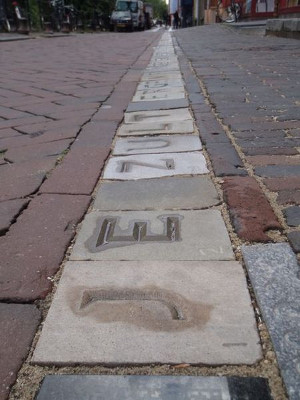During the second assault on Beaumont-Hamel in November 1916, British Second Lieutenant George Edwards was ordered to capture a German battalion headquarters. The fog was so thick that Edwards managed to surround the Germans, and their commanding officer and 300 men surrendered when they were told that strong reinforcements were on the way. When the reinforcements didn’t materialize, though, it became clear that Edwards’ platoon was in fact badly outnumbered.
The German Commanding Officer told him [Edwards] quite nicely and politely that the position was reversed and that he and his men were now the prisoners. There was nothing for it but to submit and Edwards accompanied the C.O. down into the dugout. Here he was given a drink, treated with every consideration and even invited to look through the periscope — a huge affair which gave its owners a commanding view of the surrounding country.
It was then, the fog having lifted somewhat, that Edwards spotted the arrival of the long expected reinforcements. Not to be outdone in courtesy by his German hosts he begged them to consider themselves once more as his prisoners and, as such, to accompany him to the surface. This they did, only to find on arrival that they were called upon to surrender for a third time — on this occasion by a chaplain and a party of Dublin Fusiliers.
“Edwards went up to the Chaplain to explain the situation; the Chaplain promptly knocked him down and disappeared into the fog with his captives.”
(From Richard van Emden, Meeting the Enemy: The Human Face of the Great War, 2013.)



